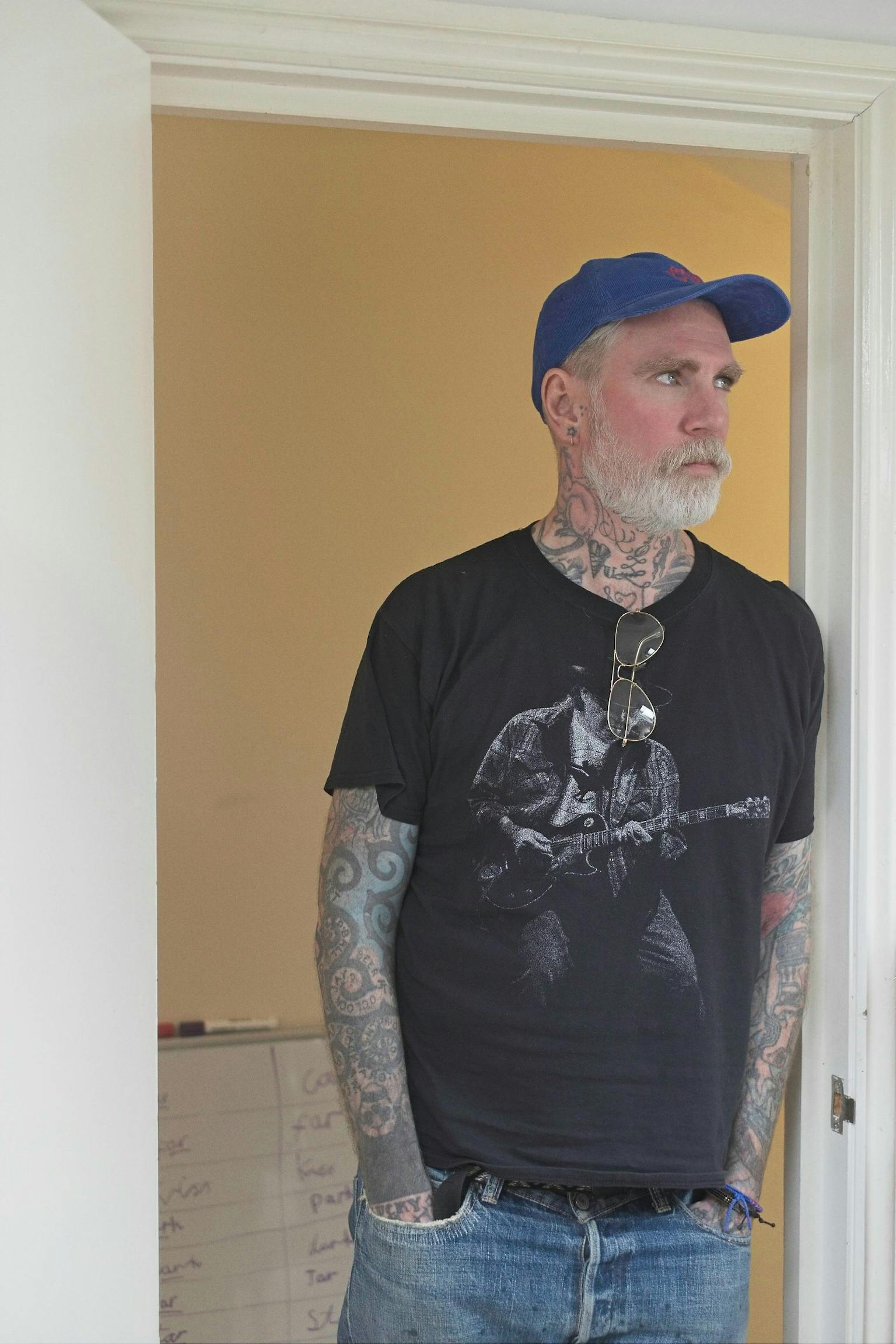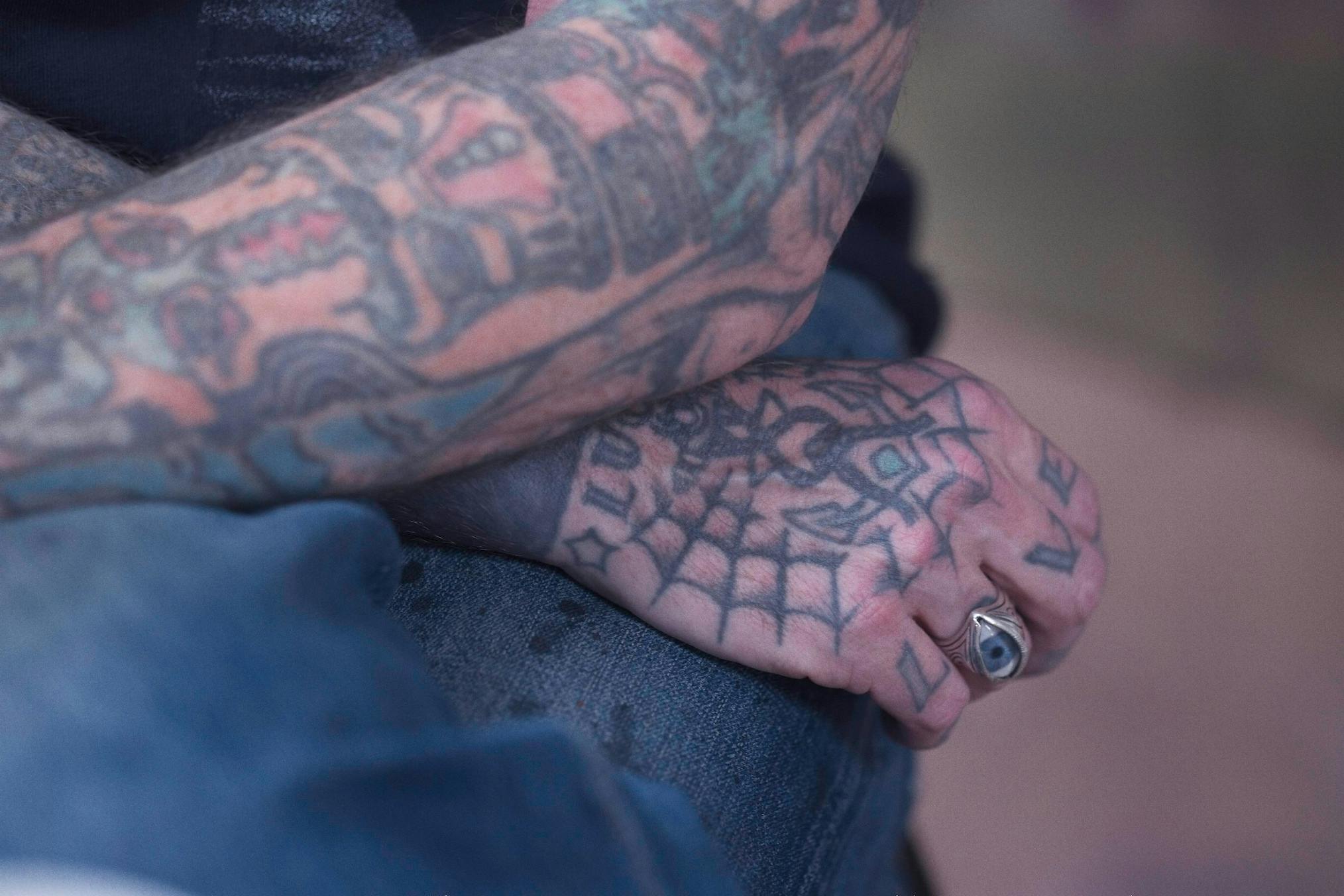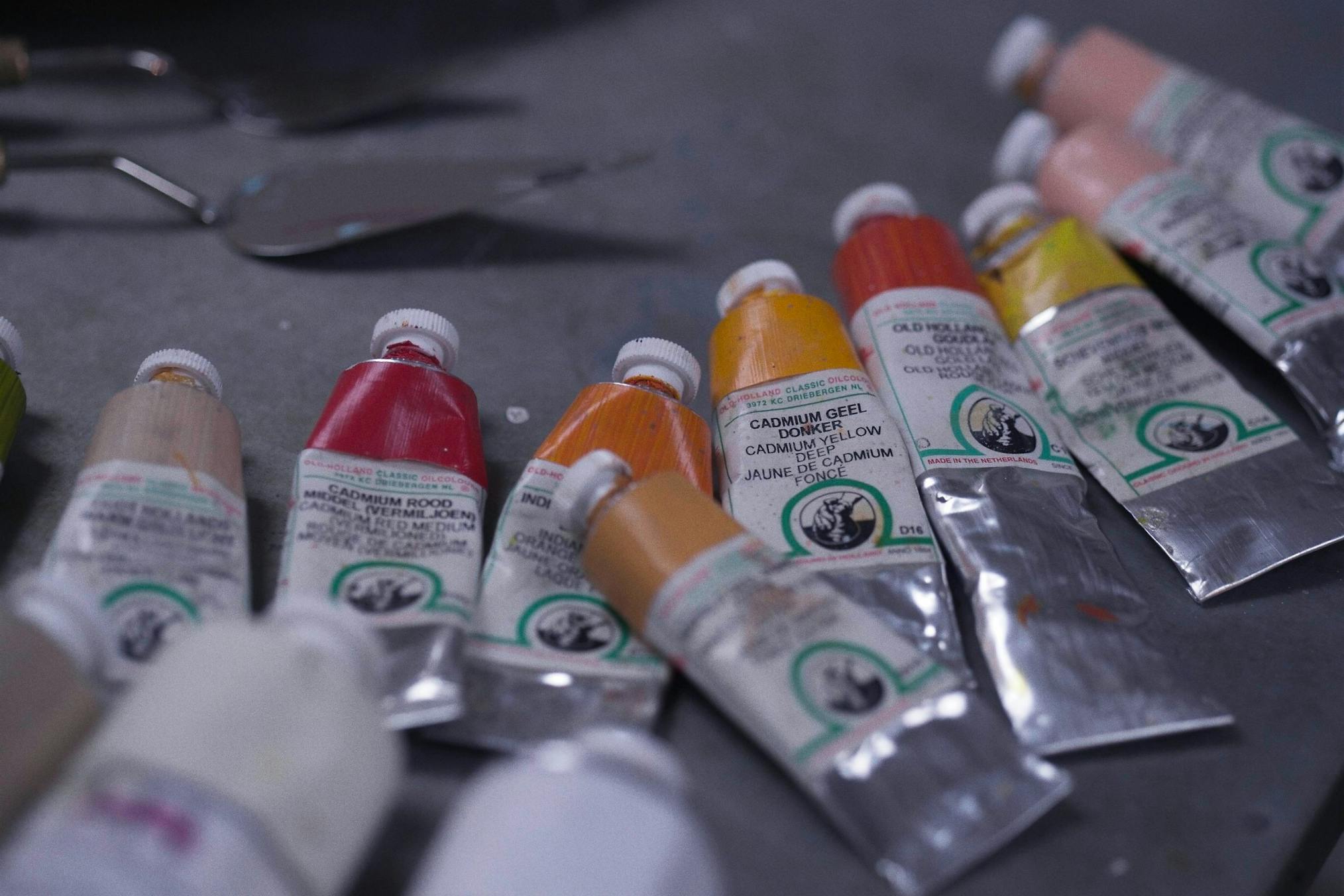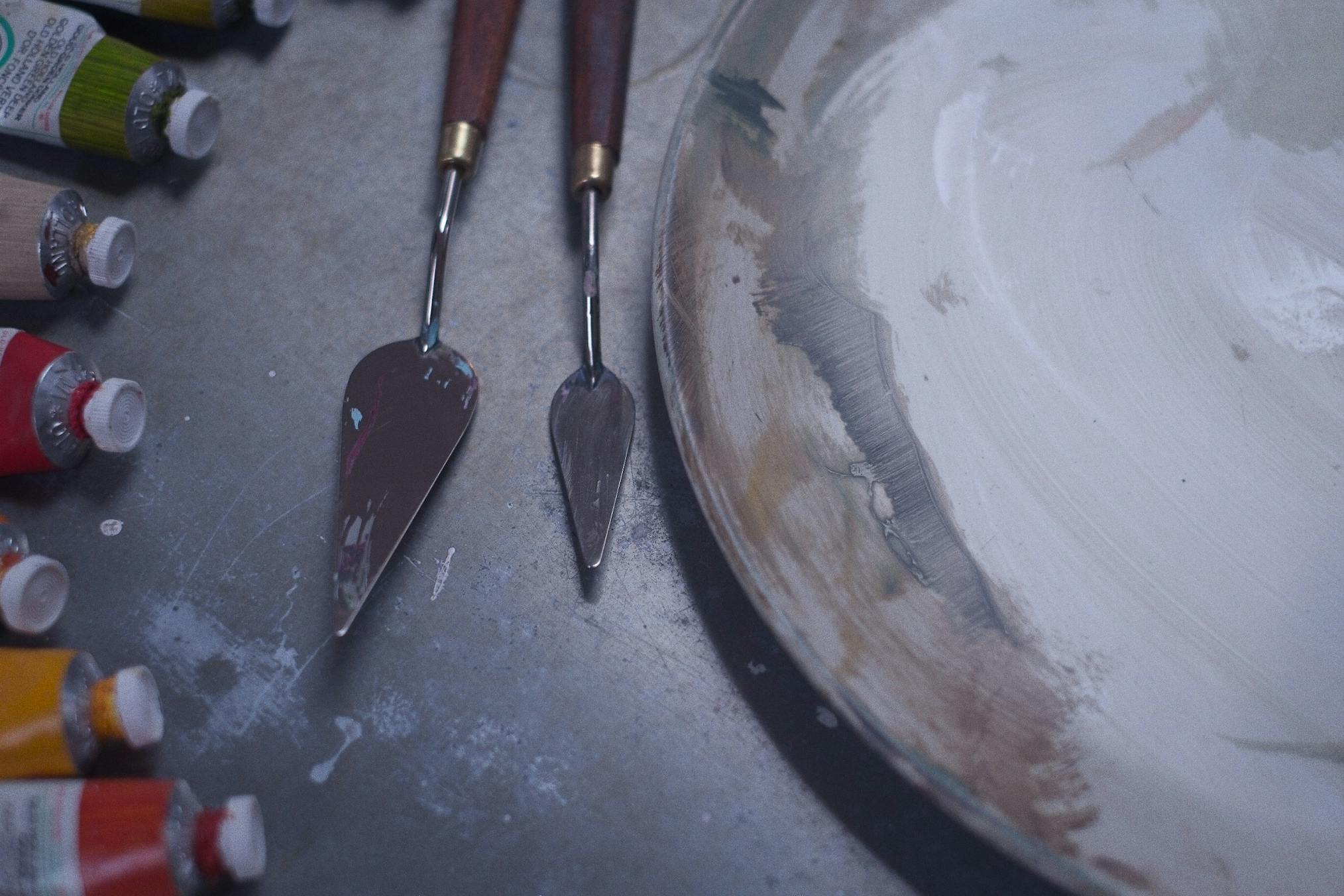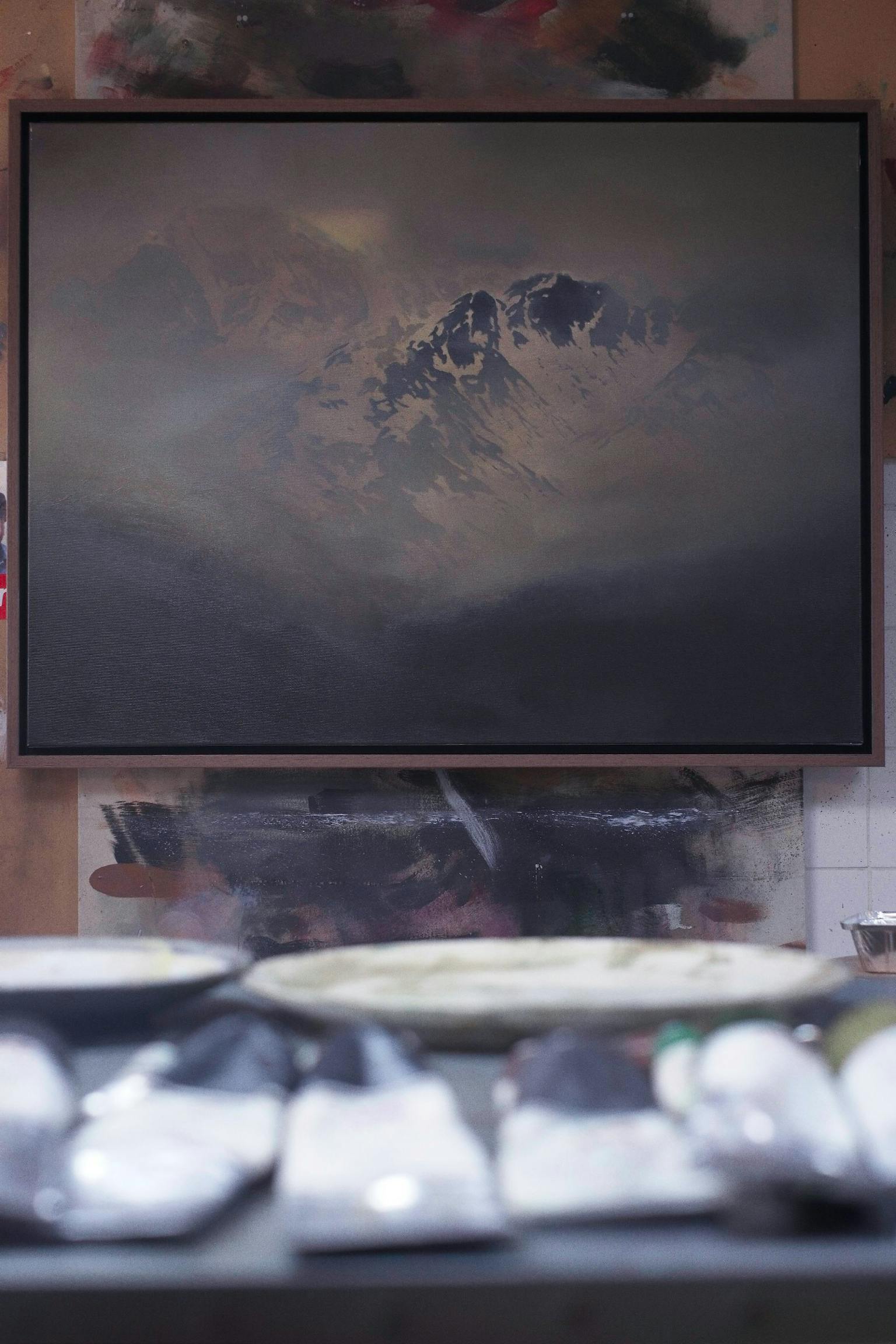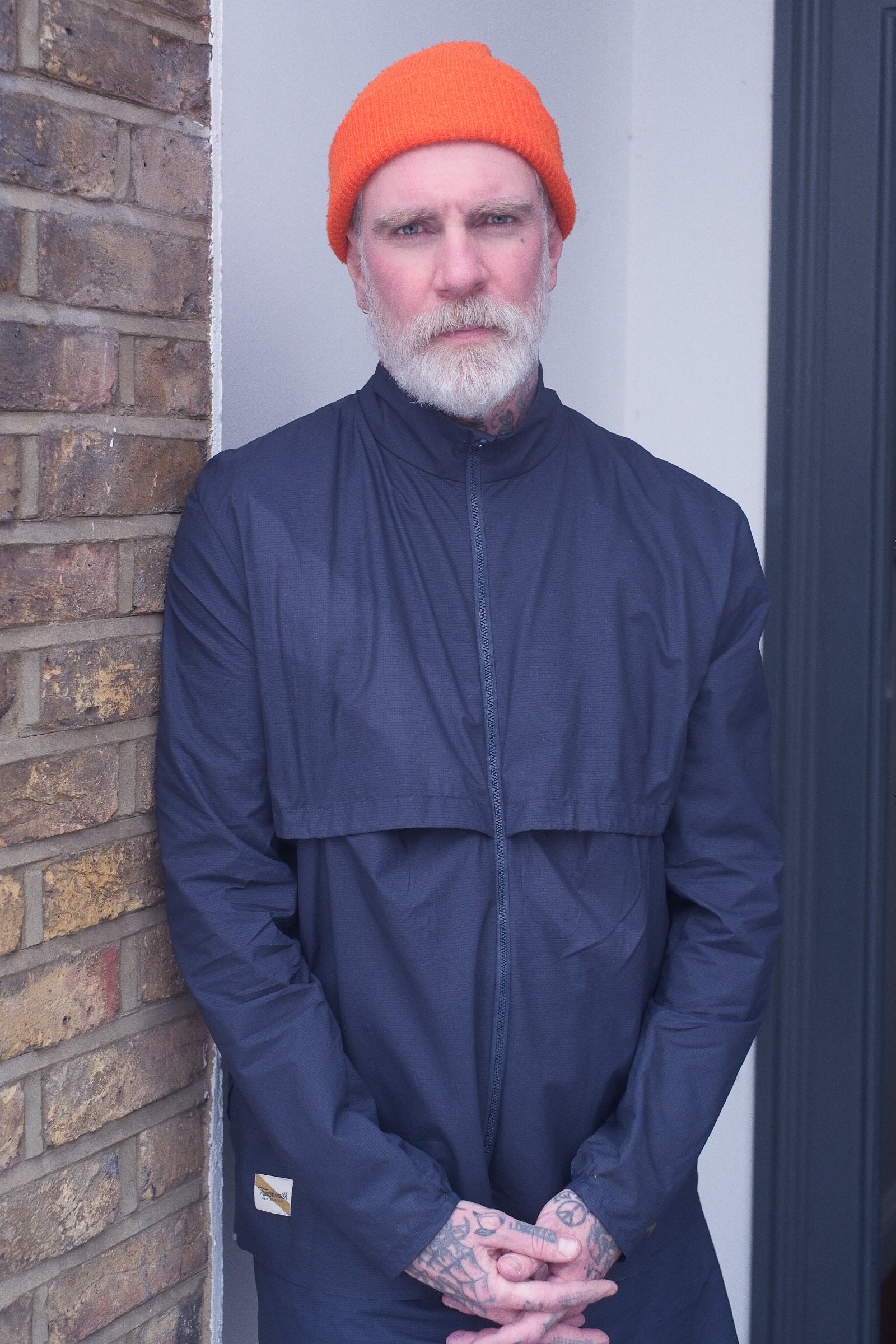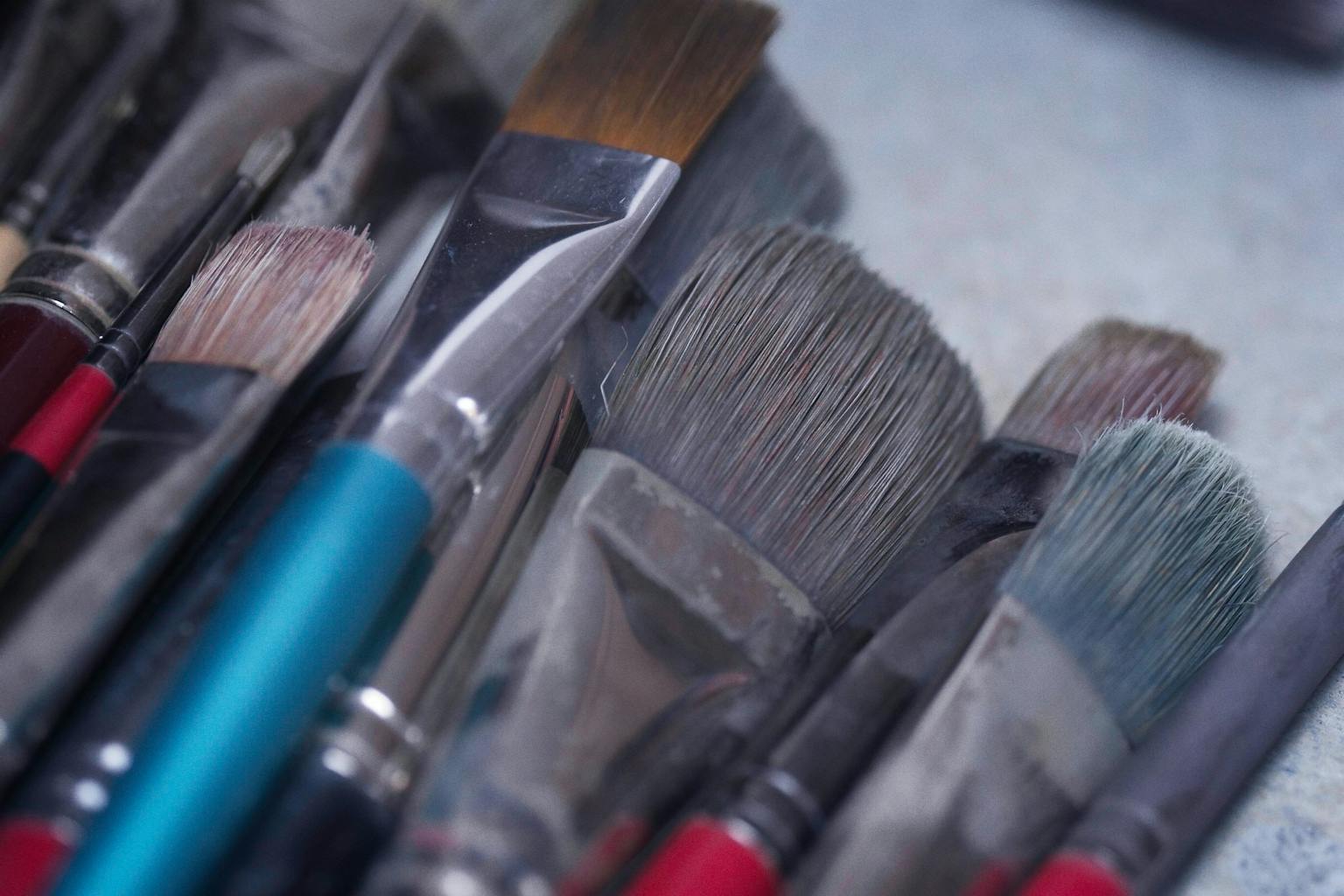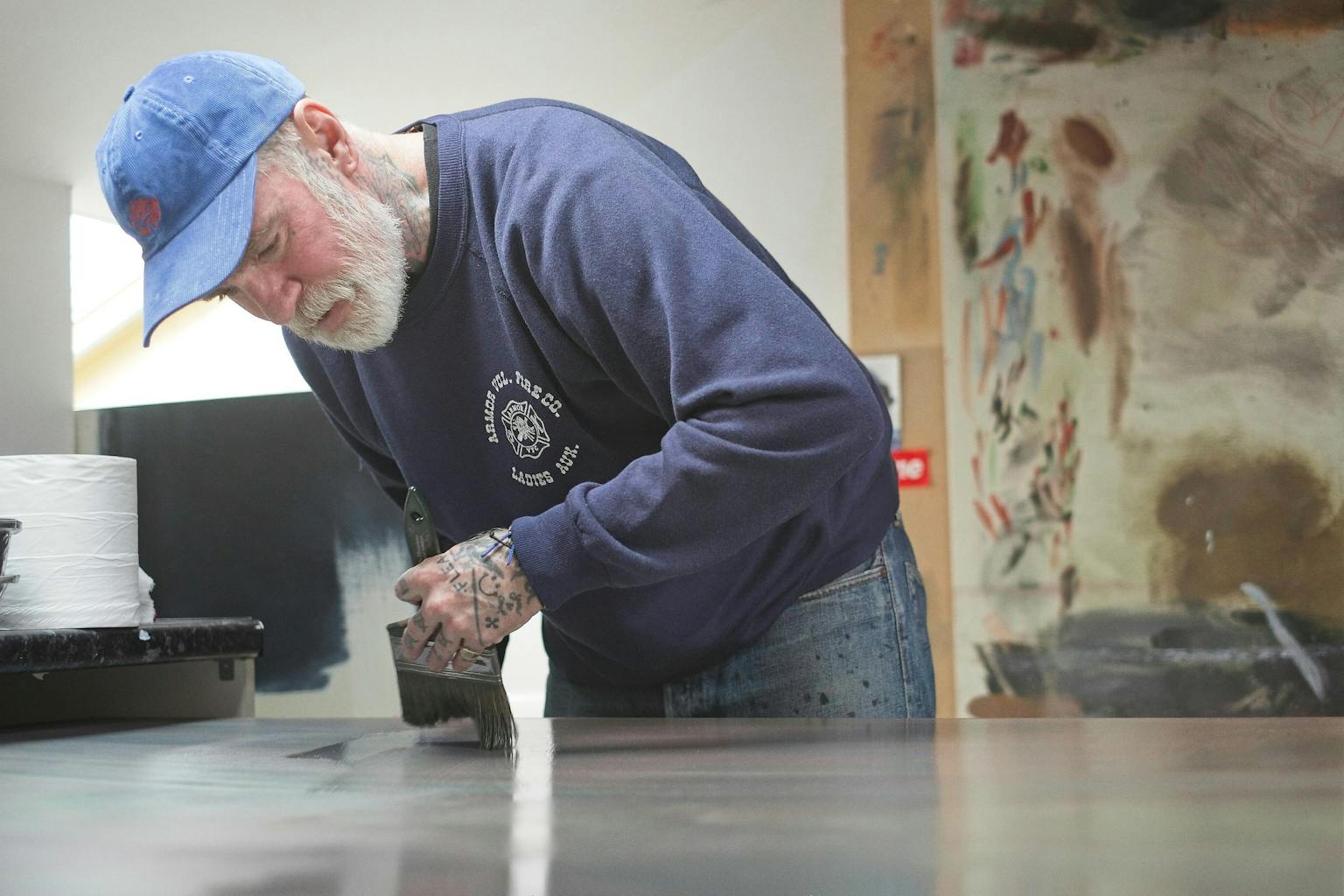GROWING UP, you probably didn’t see too many tattoos. It’s remarkable looking back, how even a movie like Fight Club (which was released in 1999 but still feels contemporary), is practically free of tattoos; imagine what a remake would look like in 2023. Would a counter-cultural protagonist be ink-free? Unlikely.
In 2023, almost everyone in the public eye, from athletes to artists to actors, is tattooed to some degree, whether that’s Sha’Carri Richardson with a dragon on her shoulder or Jakob Ingebritsen’s miniature hand-poke tattoos. Over the course of a 30-year career, Miles Chaperlin, 50, has seen trends come and go as tattooing has undergone wave upon wave of increasing ubiquity. Starting out as a tattooist while still an art student in Newcastle-upon-Tyne, he’s worked in some of the world’s most prestigious studios. Since 2006 he’s been a resident at London’s Frith Street Tattoo, an institution in the trade.
When Covid hit and lockdowns were imposed, Miles found himself locked out of the studio for 13 months. The break was tough, but it allowed him the opportunity of time, first to cement a newly rekindled relationship with running, and second to rediscover his first creative love: painting.
Since that time, life has changed: he splits his week between tattooing and painting, and running – always early around the semi-wild open spaces of east London – has become an almost daily ritual. We caught up with him at home to learn more about the elements that make him tick.
On beginnings
MC: I’d been attracted to tattooing since I was a kid. My earliest memory of tattooing is my mum pointing out a guy who had a tattooed face. She whispered, ‘look at him!’ in shock, and I think she said, that would be like having blue hair all the time, and I remember going, ‘wicked, sign me up.'
On first times
MC: There are first tattoos and there are other FIRST tattoos. The very first tattoos I did were at school, on friends with a pin. The only nerves were not getting caught. The minute you start working in a shop they expect a certain level of experience. I remember her name was Allison, it was a tribal armband, and I kept the stencil for years, framed in a clip frame in my workspace to remind myself where I came from.
I was absolutely shitting myself.
I just remember thinking, ‘Don’t shake’ because fundamentally you don’t want to shake when you’re tattooing. She asked me how long I’d been tattooing and I said three years, which was a bit of a white lie, or even just a massive lie. But you need to instill confidence in them and I had tattooed enough on my friends and on myself.
It was so exciting, doing something I’d always been attracted to from a young age, and to be actually doing it on a paying customer was the realization of a dream. I was thrilled to be doing it, but I pulled it off. In the 90s when I started, tribal – big black pattern work – had just come out of California, and it’s a very forgiving style: you can be a couple of millimeters out on either side and it doesn’t affect the overall design. If you’re doing a portrait or you’re doing something graphic, you need to be millimeter perfect – it looks like your grandmother, not Marilyn Monroe.
On people
MC: Working in a tattoo studio is like being in the kitchen at a party. It’s very social. And you do double up as a therapist – it’s surprising how quickly people open up. I hear about everything – affairs, divorces, kids – because it’s a safe space, and I think there’s something cathartic about the pain that makes people want to talk. Pain is a leveler, and it doesn’t matter how much money you have in the bank, I can’t take that bit away. And if you’re doing a full sleeve, let’s say that’s 15hrs in 3hr blocks, that’s a lot of sessions over a six month period. It’s quite a lot sometimes. You have to remember their story and there’s a pressure to be social – and I am social – and my favorite part of tattooing now is the people. I’ve tattooed most lines you can make with a tattoo machine. Once you’ve done that, what’s different? What’s different is the people. But equally, the best thing about painting is the isolation. Having spent 30 years being incredibly sociable, the thought of spending the next 20 years alone in a studio, painting and listening to the radio sounds about perfect. Painting has given me a light at the end of the tunnel – there could be something else – and that’s actually made me enjoy tattooing more. Ultimately I see myself as a creative person – I can do anything – so why pigeonhole myself into just being a tattooist?
On fame
MC: A tattoo studio can be an intimidating space. That’s a leveler. I tattoo a certain number of people who are famous or in the public eye and I’m fortunate that I have a private room in Frith Street so that means that when I’m tattooing an actress or an actor, they have a bit of privacy. But you know, we all get out of bed one foot at a time, it doesn’t matter to me who they are, and I’m not charging them any more for who they are. Everybody deserves the best.
On canvas
MC: The response I want from a painting is very different to the response I want from a tattoo. When someone looks at a tattoo, you’re probably making a decision about what that person is like, their personality. Style is in there, fashion is in there, lifestyle is in there: you make an assumption about a person, and then you make an aesthetic decision on the tattoo – how well it’s executed, the quality of line work, etc.
You look at a painting and I think I’m trying to portray a feeling, and I’m trying to create a feeling in the viewer when they look at it. They’re very different things. Tattooing is exacting, incredibly precise, and there’s not a lot of room for creativity during the process: all the creativity is done prior – you make all the decisions and then you sit down and execute it. The thrill for me with painting is that I can do something that is the absolute opposite of tattooing. It’s all about mark making, it’s totally changeable and I’m answerable to nobody. The only person I need to satisfy is myself. Whether I can make a career out of it I don’t know, but I have faith in my idea of taste and style and aesthetic decisions, and I ask myself, 'is that a painting I would like on my wall?' Ultimately, that’s why I paint: I can’t afford paintings so I want to paint the stuff that I have in my house and if I like it, hopefully other people will too.
I think there are three types of people in this world: the creators of things who come up with ideas from scratch; there’s a middle group – which is where I put myself – who spot what’s being done by the pioneers, and then there are the masses who follow behind, making decisions based on what’s presented to them. Generally speaking, I think the things I like, I spot them a year or two after they’ve been made, and then the mainstream follows about five years later. I just hope they catch up and think my paintings are good.
On foot
MC: I went to a boarding school in Surrey which was Dickensian in its methods. I hated every second of it – I found it to be barbaric. The only reason you were allowed to leave the grounds was to do an activity, like running or photography. So I would run. I didn’t have any natural talent for it, but I found the escapism to be amazing. If I had an hour block between lessons I would go and run for an hour, and if I had two hours, I’d run for two hours. Just to be out and be by myself – a boarding school is a dormitory of 30 kids, a classroom of 30 kids, always surrounded, never any isolation. To go out of the school grounds was a treat.
I kept it up till I was probably 21, but it gradually fell by the wayside. I missed it, but I wasn’t prepared to put in the work to get it back: I knew you had to put in the effort for those first six weeks to get it back. So I’m glad to be back now – I’ve been back running for two years.
I’d just got divorced, was getting used to single life and co-parenting, so I had my son half the week, but I also had days where I had this gap in the morning so I had some time. I always run in the morning, early – I like to run about 6 a.m. My friend said he’d come over and take me for a run. We did a little 5k at a slow pace. Really slow. I was running too fast so I’d burn myself out in 10 minutes, but he kept it super slow, just above walking pace, and we did a 5k and it wasn’t hard. He gave me the permission to go slow. I didn’t realize. And I felt great! The sense of achievement and starting something again, something new that was virtually free. It was wonderful to be back, and very quickly I improved.
